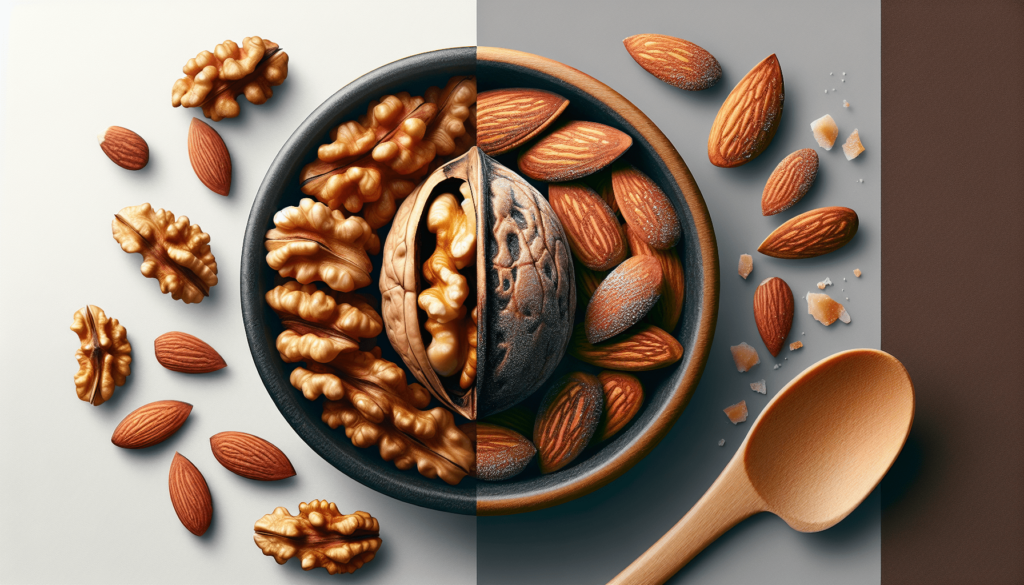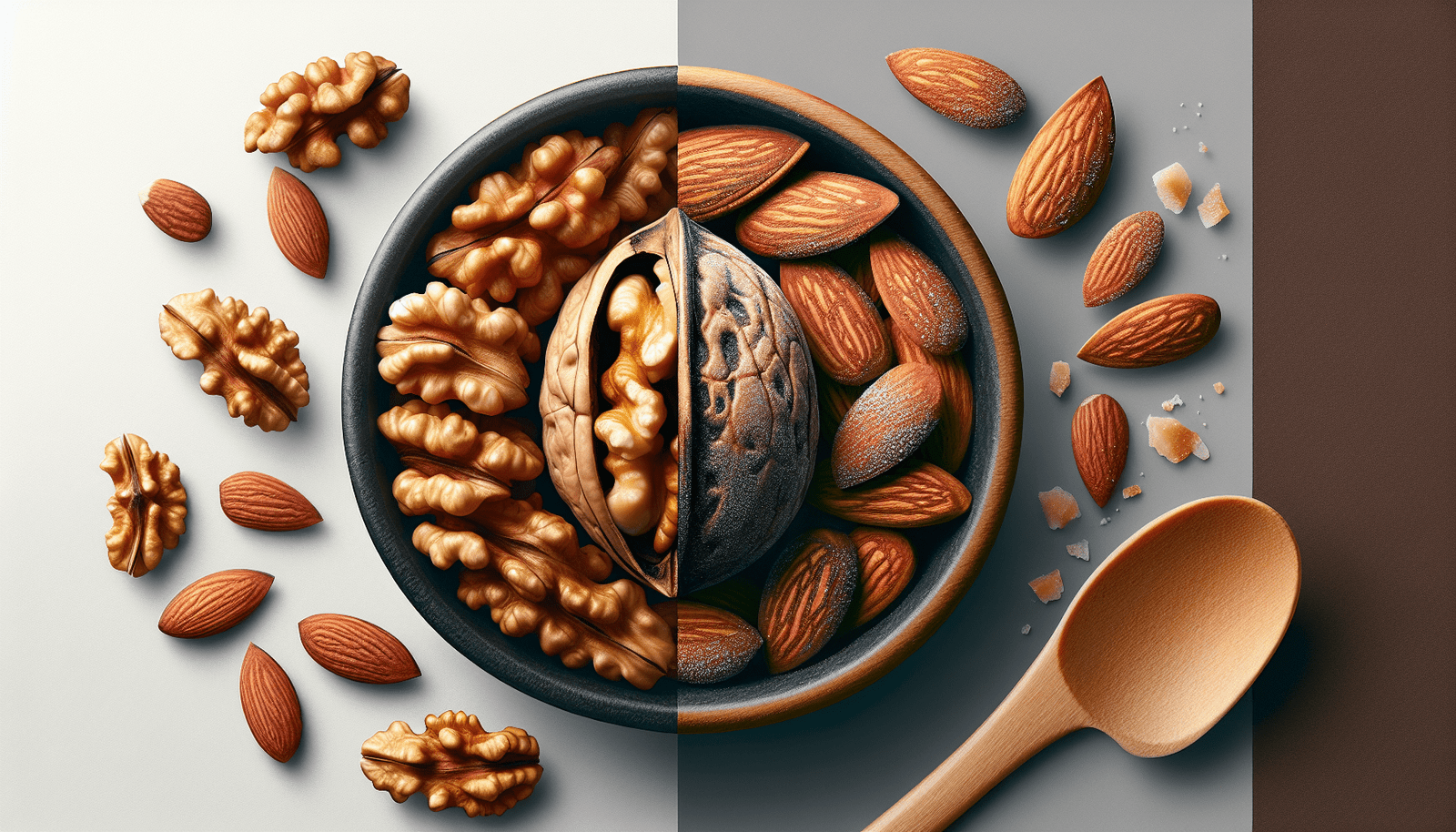Are you nuts about nuts? If so, you might find yourself pondering an oh-so-important question: are raw nuts or roasted nuts healthier? With so many nutty options on the market, it can be tough to decide which direction to go in. Fear not, my friend, for in this article, we will explore the great debate of raw nuts vs. roasted nuts and break down the health benefits of each. Get ready to crunch your way to a better understanding of these delicious snacks!
Nutrition Content
Comparison of raw and roasted nuts
When it comes to choosing between raw and roasted nuts, understanding the differences in their nutrition content is essential. Raw nuts refer to nuts that have not been subjected to any heat treatment, while roasted nuts have undergone a process of heating. This heating process affects the nutrient levels in nuts and can lead to changes in both macronutrients and micronutrients.
Impact of roasting on nutrient levels
Roasting nuts can have an impact on the nutrient levels they contain. The process of roasting can cause certain nutrients to degrade, while others may become more concentrated. It is important to consider these changes when deciding between raw and roasted nuts.
Changes in macronutrients
Roasting nuts can alter the levels of macronutrients they contain. For example, the fat content in nuts can increase as a result of roasting, as the heat causes the fats to be released. However, this increase in fat content should not necessarily be viewed as negative, as nuts are a rich source of healthy fats. Roasting can also lead to a decrease in the protein content of nuts, although it is not a significant change.
Changes in micronutrients
Roasting nuts can also affect the levels of micronutrients they contain. Some vitamins and minerals are heat-sensitive and may be partially lost during the roasting process. However, roasting can also enhance the availability of certain nutrients. For example, studies have suggested that roasting can increase the bioavailability of antioxidants in nuts, which can have various health benefits.
Antioxidant Levels
Effect of roasting on antioxidant content
Antioxidants are compounds that help protect the body against oxidative stress and inflammation. Various studies have explored the impact of roasting on the antioxidant content of nuts. While it is true that roasting can cause some antioxidant loss, it is important to note that the overall antioxidant levels remain significant even after roasting. In fact, roasting can enhance the availability and accessibility of antioxidants, making them easier for the body to absorb and utilize.
Effect of roasting on phenolic compounds
Phenolic compounds are a type of antioxidant found in nuts. These compounds have been linked to numerous health benefits, including reducing the risk of chronic diseases. Roasting nuts can lead to changes in the levels of phenolic compounds. While some studies have suggested a decrease in phenolic content after roasting, others have found an increase. The impact of roasting on phenolic compounds may vary depending on the nut variety and the specific roasting process used.

Healthy Fats
Presence of healthy fats in raw nuts
Nuts are known for being a great source of healthy fats, including monounsaturated and polyunsaturated fats. These fats have been associated with various health benefits, such as improved heart health and reduced inflammation. Raw nuts naturally contain these healthy fats, making them an excellent choice for those looking to incorporate more healthy fats into their diet.
Changes in fat content due to roasting
Roasting nuts can lead to changes in their fat content. As the nuts are exposed to heat, the fats in them may be released, resulting in a potentially higher fat content compared to raw nuts. However, it is important to note that the fats released during roasting are still the same healthy fats found in raw nuts. The increase in fat content should not be a cause for concern, as long as the nuts are consumed in moderation as part of a balanced diet.
Glycemic Index
Differences in glycemic index
The glycemic index (GI) is a measure of how quickly a food raises blood sugar levels. Foods with a high GI can cause a rapid increase in blood sugar, while foods with a low GI produce a more gradual and sustained rise. When comparing raw and roasted nuts, the impact on the glycemic index is minimal. Both raw and roasted nuts have a low GI, which means they have a minimal effect on blood sugar levels and can be a suitable choice for individuals managing their blood sugar.
Effect of roasting on glycemic index
Roasting nuts does not significantly impact their glycemic index. The process of roasting does not introduce additional carbohydrates or sugars that could raise blood sugar levels. As a result, individuals with diabetes or those following a low glycemic diet can still enjoy the benefits of nuts, whether they are raw or roasted.

Digestibility
Effect of roasting on digestibility
Roasting nuts can enhance their digestibility. The heat applied during the roasting process helps soften the nuts, making them easier to chew and digest. This can be especially beneficial for individuals with digestive issues or those who struggle with breaking down raw nuts. Roasted nuts are often more palatable and enjoyable to eat, providing a favorable option for those looking to incorporate nuts into their diet.
Raw nuts and potential digestive benefits
While roasting can improve the digestibility of nuts, some individuals may prefer consuming raw nuts for their potential digestive benefits. Raw nuts are rich in enzymes and fiber, which can aid in digestion. Additionally, raw nuts have a higher water content, which can help with bowel regularity. It is important to listen to your body and choose the form of nuts that works best for your digestive system.
Acrylamide Formation
Concerns over acrylamide formation in roasted nuts
Acrylamide is a chemical compound that can form when foods are exposed to high heat, such as during roasting or frying. There have been concerns raised about the presence of acrylamide in roasted nuts and its potential health risks. Acrylamide has been classified as a probable human carcinogen, and its consumption should be minimized whenever possible.
Potential health risks associated with acrylamide
While the presence of acrylamide in roasted nuts is a concern, it is worth noting that the levels of acrylamide in nuts are relatively low compared to other foods. Additionally, the health risks associated with acrylamide are based on exposure to high levels over prolonged periods. As long as nuts are consumed in moderation as part of a balanced diet, the potential health risks associated with acrylamide in roasted nuts can be minimized.
Weight Management
Caloric differences between raw and roasted nuts
When considering weight management, it is important to be aware of the caloric content of nuts. Raw and roasted nuts have similar caloric values, as the roasting process does not significantly change the energy content of the nuts. Both raw and roasted nuts can be included in a weight management plan, as long as portion sizes are controlled.
Impact of roasting on satiety and weight loss
Roasted nuts may have a slight advantage when it comes to satiety and weight loss. The roasting process can enhance the flavors and aromas of nuts, making them more satisfying to eat. This increased sensory appeal can potentially lead to a greater sense of fullness and satisfaction, which may help with portion control and weight management efforts. However, it is important to note that the impact of roasting on satiety and weight loss may vary between individuals.
Taste and Texture
Preference for raw or roasted nuts
The preference for raw or roasted nuts largely comes down to personal taste. Some individuals may enjoy the natural, subtle flavors of raw nuts, while others may prefer the enhanced flavors that result from roasting. Texture is another factor to consider, as roasting can give nuts a crispier texture compared to the softer texture of raw nuts. Experimenting with both raw and roasted nuts can help determine which option suits your taste preferences.
Effect of roasting on flavor and texture
Roasting nuts can significantly impact their flavor and texture. The process of roasting enhances the natural flavors of nuts, often resulting in a richer and nuttier taste. The heat also gives roasted nuts a crunchier texture, which many people find enjoyable. The flavors and textures brought forth by roasting can make nuts a more satisfying and appetizing snack option.
Allergenic Potential
Changes in allergenic potential through roasting
For individuals with nut allergies, it is crucial to consider the potential impact of roasting on allergenic potential. Roasting nuts can reduce their allergenic potential by altering the protein structures that trigger allergic reactions. However, it is important to note that roasting may not completely eliminate the risk of an allergic reaction.
Impact of raw or roasted nuts on allergies
Individuals with nut allergies should always exercise caution when consuming nuts, whether they are raw or roasted. It is recommended to consult with a healthcare professional or allergist to determine the safest approach when it comes to including nuts in the diet. Additionally, individuals without allergies should be mindful of potential cross-contamination when consuming nuts, as this can also pose a risk to those with allergies.
Conclusion
Balancing nutritional benefits and preferences
Choosing between raw and roasted nuts ultimately depends on a balance between the nutritional benefits and personal preferences. Both forms of nuts offer their own unique advantages. Raw nuts retain more of their natural nutrient content, including enzymes and fiber that aid in digestion. On the other hand, roasted nuts can be more digestible, have enhanced flavors, and offer a satisfying crunch.
Considerations for choosing raw or roasted nuts
Consider your specific dietary needs and goals when deciding between raw and roasted nuts. If you prefer the taste and texture of roasted nuts, they can be a great option. If digestion is a concern or you prefer the natural taste of nuts, raw nuts may be more suitable. It is important to consume nuts in moderation as part of a balanced diet to reap their nutritional benefits.
In the end, making the choice between raw and roasted nuts should be based on your individual preferences, nutritional needs, and overall enjoyment of the nuts you consume.

